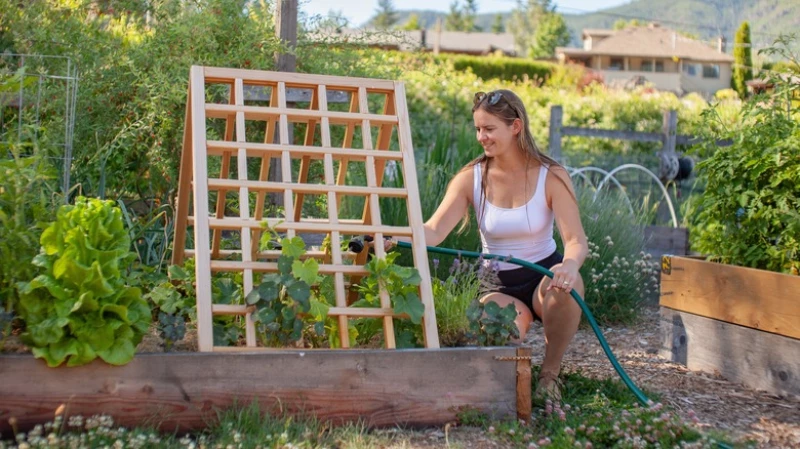Embarking on the journey of growing your own food can be a thrilling experience, but it requires proper preparation. In order to maximize the potential of your seeds, time, and harvest, it is essential to provide your plants with the necessary support to thrive. If you are considering planting fruits and vegetables like cucumbers, garden peas, or other climbing plants and vines, it is important to offer them a structure to grow on. While there are many innovative methods for vertical gardening, you can also rely on traditional techniques by constructing a sturdy and cost-effective trellis in your garden, as demonstrated by Marv, a gardening enthusiast on TikTok who is part of the @plantedinthegarden duo. Marv used only strong twine, a wooden or metal post, and eye hooks – common items that you may already have in your shed.
Enhance your garden with a cost-effective garden trellis to provide ample space for your plants to thrive. By using a trellis, you can optimize your outdoor area, saving ground space for additional planting. This method also promotes healthier yields as it prevents crops from being exposed to soil diseases and pests.
Build a raised garden bed for the plants to grow underneath the trellis
To create your trellis, start by constructing a raised garden bed for the post to tower over, similar to the method used by TikTok creator Marv from @plantedinthegarden. While not mandatory, this approach enhances the aesthetics of your garden and offers various benefits like better soil aeration and drainage for the plant roots. Once your posts are in place, if they are wooden, drill in the metal eye hooks to secure the twine. For metal posts, this step is unnecessary. Ensure the hooks are evenly spaced along the post's length, both on the sides and the top.
After installing the eye hooks, thread the twine horizontally through them, using one twine length for each pair of hooks. Fasten the twine on the top hooks for the vertical lines and weave them over and under to form boxes. Maintain a tight and consistent weaving pattern for each column. Tie off the twine ropes at the bottom and trim any excess. Your plants will now have the necessary support from the trellis to climb as high as the post allows.
Use hemp rope for heavier crops
When utilizing a trellis for climbing plants and vines, it's crucial to consider the weight limitations of the structure. For heavier crops like luffas, it's advisable to replace the standard twine with a sturdier option such as hemp rope. This substitution prevents the risk of the rope breaking under the weight of the produce, potentially causing damage to your harvest. Additionally, take into account the maximum height potential of the plants you intend to cultivate. For instance, cucumbers can reach up to 5 feet in height before bearing fruit, necessitating a trellis that can support their growth.
For those with plants that don't need a large trellis, consider building a smaller version. Transform your indoor space with climbing plants by using a miniature trellis. Ideal for ornamental plants like roses or hydrangeas, this DIY project involves drilling nails in a pattern on your wall and weaving twine or string around them. No heavy posts required! Encourage your flowers to grow against the trellis and train them upwards to cover the wall in a beautiful, vintage-inspired display.








